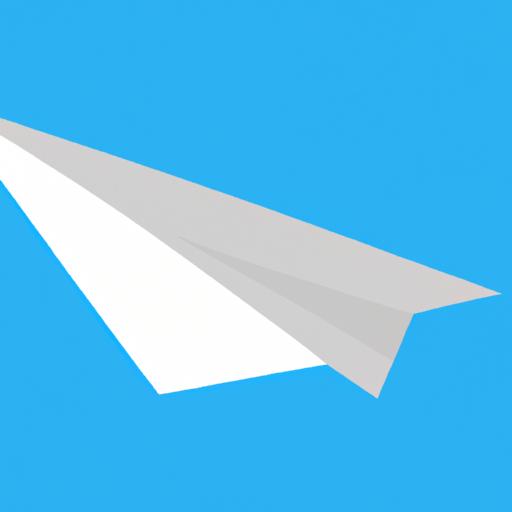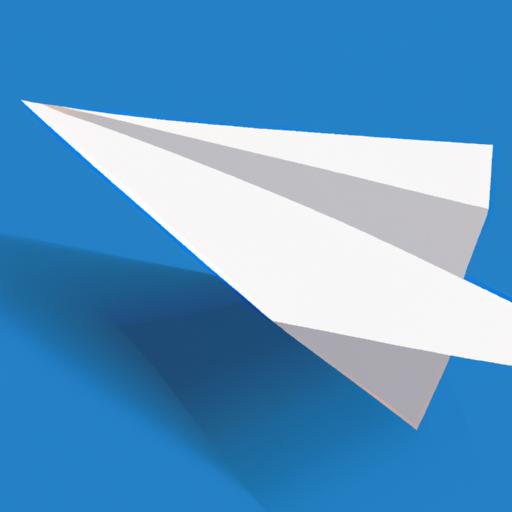How to Make Paper Airplanes: A Comprehensive Guide for Beginners
Table of Contents
Are you looking for a fun and educational activity that can be done at home? Look no further than creating paper airplanes. These simple planes can be made with just a few materials and can provide hours of entertainment for both kids and adults alike. In this article, we will provide a comprehensive guide on how to make paper airplanes, including tips for adjusting designs for better flight and techniques for launching and controlling them.
Materials Needed

Before we get started, let’s review the materials needed to make paper airplanes. First and foremost, you will need paper. The type of paper you use can affect the flight of your airplane. The best paper to use is lightweight and thin, such as printer paper or origami paper. You can also use colored or patterned paper to add some flair to your creations.
In addition to paper, you will need a few tools. These include scissors, a ruler or straight edge, and a pencil. Optional tools include a bone folder or creasing tool, which can help create crisp folds in the paper.
One of the simplest paper airplane designs is the dart plane. This design is perfect for beginners and can be made with just a few folds. Here’s how to make it:
-
Start with a rectangular piece of paper. Fold the top left corner down to the bottom edge of the paper, creating a triangle.
-
Repeat step 1 with the top right corner, folding it down to meet the bottom edge of the paper.
-
Fold the paper in half along the center crease, bringing the top of the paper down to meet the bottom.
-
Fold the wings down along the bottom edge of the paper, making sure they are even.
-
Fold the top of the paper down to create the nose of the plane.
-
Finally, fold the wings down again along the center crease to create the wingspan of the plane.
Congratulations, you’ve created a paper airplane! Now, let’s move on to more advanced designs.
Basic Paper Airplane Design: Tips for Adjusting the Design for Better Flight
While the dart plane design is straightforward, there are a few tips to keep in mind to ensure your airplane flies smoothly. One important factor is the weight distribution of the paper airplane. You want to make sure the weight is evenly distributed so that the plane doesn’t dip or veer off course.
To achieve this, try adding a small paperclip to the nose of the plane. This will add some weight to the front of the airplane, helping it fly straighter. You can also adjust the wings by bending them slightly. Bending the wings upwards will create more lift, while bending them downwards will create more stability.
Another way to adjust the design is to experiment with the size and shape of the wings. A wider wingspan will create more lift, while a narrower wingspan will create more speed. You can also try different wing shapes, such as triangular or curved, to see how they affect the flight of the airplane.
Advanced Paper Airplane Designs: Instructions for Creating More Complex Paper Airplanes
Once you’ve mastered the basic design, it’s time to move on to more advanced paper airplane designs. Here are instructions for creating two popular designs:
The Hammerhead
-
Start with a rectangular piece of paper. Fold the top left corner down to the bottom edge of the paper, creating a triangle.
-
Repeat step 1 with the top right corner, folding it down to meet the bottom edge of the paper.
-
Fold the paper in half along the center crease, bringing the top of the paper down to meet the bottom.
-
Fold the top corners of the paper down to meet the center crease, creating two small triangles at the top of the paper.
-
Fold the top of the paper down to create the nose of the plane.
-
Fold the wings down along the bottom edge of the paper, making sure they are even.
-
Fold the wings down again along the center crease to create the wingspan of the plane.
-
Fold the bottom corners of the paper up towards the top of the plane, creating a small triangle at the bottom of the plane.
-
Finally, fold the tail of the plane up to create the hammerhead shape.
The Nakamura Lock
-
Start with a rectangular piece of paper. Fold the top left corner down to the bottom edge of the paper, creating a triangle.
-
Repeat step 1 with the top right corner, folding it down to meet the bottom edge of the paper.
-
Fold the paper in half along the center crease, bringing the top of the paper down to meet the bottom.
-
Fold the top corners of the paper down to meet the center crease, creating two small triangles at the top of the paper.
-
Fold the wings down along the bottom edge of the paper, making sure they are even.
-
Fold the wings down again along the center crease to create the wingspan of the plane.
-
Fold the top of the paper down to create the nose of the plane.
-
Fold the tail of the plane up to create a small triangle at the bottom of the plane.
-
Finally, fold the wings up towards the top of the plane and insert them into the flaps at the top of the plane, creating the Nakamura Lock.
Experiment with different designs and adjustments to create your own unique paper airplanes. With a little practice and creativity, you’ll be able to create planes that soar through the air with ease.
Tips for Flying Paper Airplanes
Now that you’ve created your paper airplane, it’s time to fly it! Here are some tips for launching and controlling your paper airplane:
Launching
The way you launch your paper airplane can affect its flight. Here are some techniques to try:
- Hold the plane at the midpoint of the wings with the nose pointed upwards.
- Give the plane a gentle toss in the air, aiming for a slight upward angle.
- Experiment with different launch angles and speeds to see how they affect the flight.
Controlling
Once your airplane is in the air, you can control its flight with these techniques:
- Adjust the angle of the wings to change the direction of flight.
- Bend the back of the wings up or down to adjust the plane’s altitude.
- Use small adjustments instead of big movements to avoid overcorrecting.
Factors that Affect Flight
There are several factors that can affect the flight of your paper airplane. These include:
- The weight and thickness of the paper.
- The design of the airplane.
- The launch angle and speed.
- Air currents and wind.
Experiment with different designs and techniques to see how these factors affect your paper airplane’s flight.
Conclusion
In conclusion, creating paper airplanes is a fun and educational activity that can provide hours of entertainment. Whether you’re a beginner or an experienced paper airplane maker, there are endless possibilities for unique designs and flight patterns. Remember to use lightweight paper, adjust designs for better flight, and experiment with different launch and control techniques. With these tips in mind, you’ll be able to create paper airplanes that soar through the air with ease. So grab some paper and get ready to take flight!

